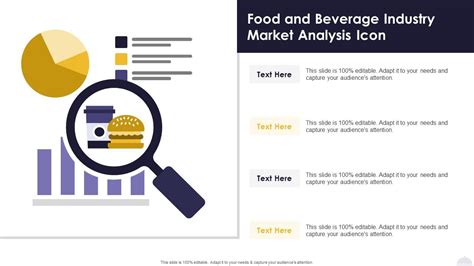A Complete Recipe for Food and Beverage Industry Analysis
The food and beverage (F&B) industry is a dynamic and ever-evolving sector, presenting both significant opportunities and formidable challenges. Conducting a thorough industry analysis is crucial for businesses aiming to thrive in this competitive landscape. This comprehensive guide provides a detailed recipe for crafting a robust F&B industry analysis, covering key ingredients for a successful analysis.
I. Understanding the Recipe: Defining Your Scope
Before diving into the specifics, clearly define the scope of your analysis. What segment of the F&B industry are you focusing on? Are you interested in:
- Specific product categories? (e.g., organic foods, craft beers, plant-based alternatives)
- Geographic regions? (e.g., the North American market, emerging Asian economies)
- Specific business models? (e.g., quick-service restaurants, fine dining establishments, food delivery services)
A well-defined scope ensures your analysis remains focused and actionable.
II. Key Ingredients: Gathering Essential Data
This stage involves collecting crucial data points to inform your analysis. Key ingredients include:
- Market Size and Growth: Analyze the overall size of your target market and project its future growth. Consider factors like population demographics, changing consumer preferences, and economic conditions.
- Consumer Trends: Identify emerging trends shaping consumer behavior. Are consumers increasingly health-conscious? Are they seeking convenience and sustainability? Understanding these trends is paramount.
- Competitive Landscape: Analyze your direct and indirect competitors. Identify their strengths, weaknesses, market share, and strategies. Use tools like Porter's Five Forces to understand the competitive dynamics.
- Regulatory Environment: Assess the regulatory landscape, including food safety regulations, labeling requirements, and import/export restrictions. Compliance is crucial.
- Technological Advancements: Explore technological innovations impacting the industry, such as automation, food processing technologies, and digital marketing tools.
- Supply Chain Dynamics: Analyze the complexities of the supply chain, including sourcing raw materials, manufacturing, distribution, and logistics.
III. The Mixing Process: Analyzing Your Data
Once data is gathered, analyze it to identify key insights. This involves:
- Market Segmentation: Divide your target market into distinct segments based on factors such as demographics, lifestyle, and purchasing behavior. This allows for targeted marketing strategies.
- SWOT Analysis: Conduct a SWOT analysis (Strengths, Weaknesses, Opportunities, Threats) to assess the overall landscape and identify areas for improvement.
- PESTLE Analysis: Consider the macro-environmental factors impacting the F&B industry using a PESTLE analysis (Political, Economic, Social, Technological, Legal, Environmental).
IV. The Flavor Profile: Crafting Actionable Insights
The goal is to translate your data analysis into actionable insights. This involves:
- Identifying Opportunities: Based on your analysis, pinpoint specific opportunities for growth and innovation within the F&B industry.
- Developing Strategies: Formulate strategic recommendations for businesses operating in the F&B sector based on your insights. This could involve product development, marketing strategies, or operational improvements.
- Predicting Future Trends: Based on your understanding of market dynamics, predict future trends and their potential impact on the industry.
V. Serving Your Analysis: Presentation and Communication
Effectively communicate your findings through compelling visualizations and clear, concise language. A well-presented analysis is crucial for informing decision-making.
By following this "recipe," you can conduct a comprehensive food and beverage industry analysis, providing a foundation for strategic planning and success in this dynamic sector. Remember that continuous monitoring and adaptation are key to staying ahead in this ever-changing landscape. The F&B industry is a constantly evolving ecosystem, so regular updates to your analysis are vital.
